Today seemed like an appropriate day to start finishing my album.
It's a collection of 6 of my best recent tracks, and can be found online here.
http://milkcrate.com.au/godinpants/godinpants-areyouwithus.zip
It features a reasonable amount of variance, some nanoloop, underclocked sounds, sampled drums in LSDJ, re-sampled sounds sequenced using a monome.
I'm pretty happy with it. I've printed up some covers and will be handing them out at my upcoming performance at the campus band comp.
Monday, July 27, 2009
Wednesday, July 22, 2009
More on underclocking.
I decided to underclock one of my DMGs today.
I didn't have the exact 2.097152MHz crystal required for a halving of pitch in tune with the original crystal, but a 2MHz crystal should be fine, and sounds great intune with itself.
Heres a few pictures of the result. And a song I wrote using the underclocked DMG and a copy of Nanoloop.
(you'll have to click on these images to see them at full size)
Here is where the original crystal was, and you can see the wires leading to the new crystals.
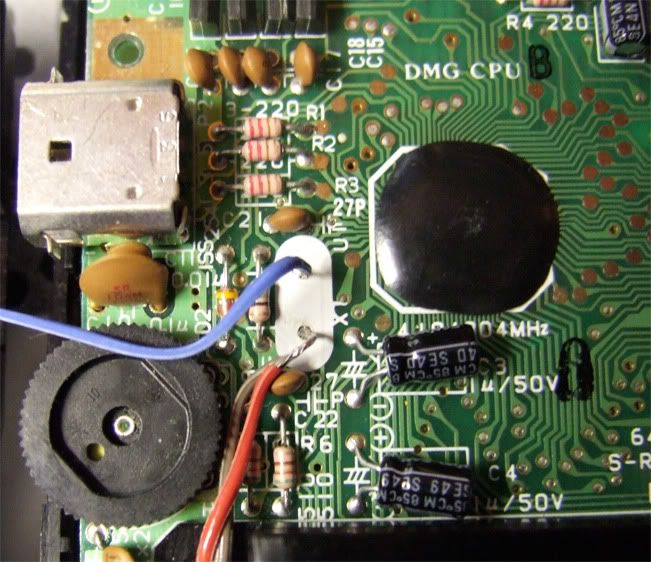
You can see where the switch was installed, and where I placed the two crystals.
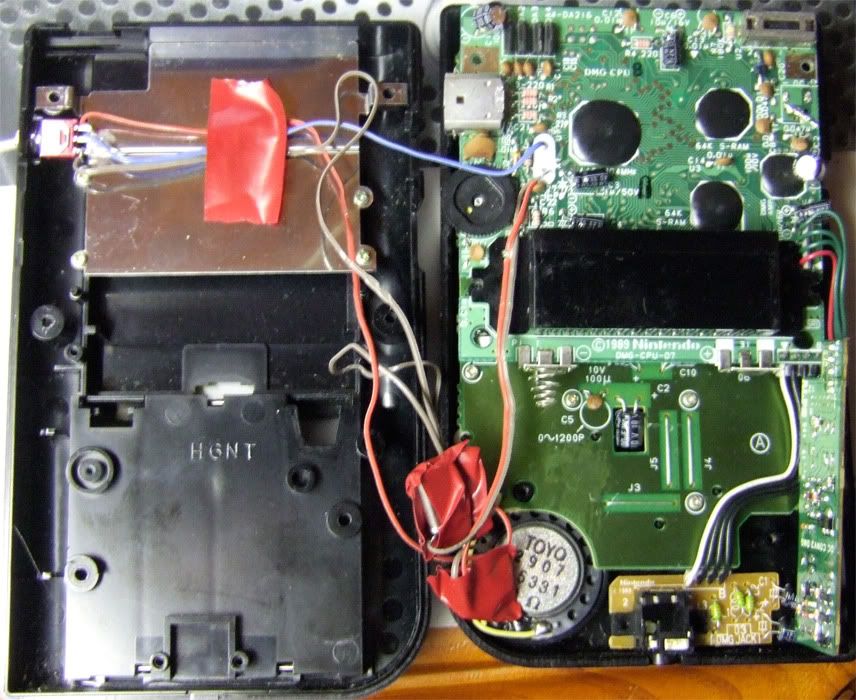
Because i removed the dc socket for switch placement, I had to bridge this part of the board so power would still run through.(if you dont do this, the gameboy just doesn't turn on)
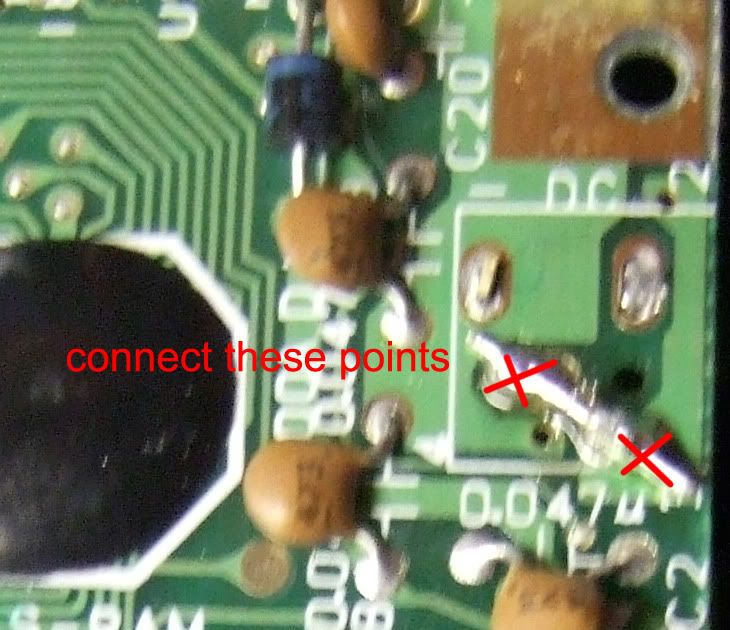
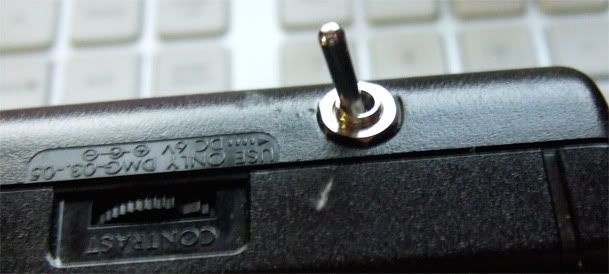
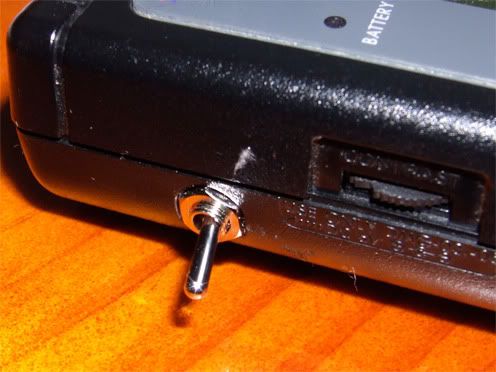
Here's a comparison of start up sounds just to show the difference, first full speed, second is half speed
I didn't have the exact 2.097152MHz crystal required for a halving of pitch in tune with the original crystal, but a 2MHz crystal should be fine, and sounds great intune with itself.
Heres a few pictures of the result. And a song I wrote using the underclocked DMG and a copy of Nanoloop.
(you'll have to click on these images to see them at full size)
Here is where the original crystal was, and you can see the wires leading to the new crystals.

You can see where the switch was installed, and where I placed the two crystals.

Because i removed the dc socket for switch placement, I had to bridge this part of the board so power would still run through.(if you dont do this, the gameboy just doesn't turn on)



Here's a comparison of start up sounds just to show the difference, first full speed, second is half speed
Monday, July 13, 2009
Underclocking/Overclocking.
While the Gameboy has a decent range, when exploring influences such as dubstep and drum and bass, composers often want to go lower, to get deeper, fuller bass.
While artificial pitch shifting can be achieved easily with computers, it usually results in artifacts and leaves the sound not as good as it could be.
This is where underclocking becomes a good option.
The following video presents one clock changing option, giving the user realtime control over clock speed.
However, the more popular(and easier) option, is to change the crystal oscillator, from 4.194304MHz to 2.097152MHz, although due to the difficulty in finding 2.097152MHz crystals, 2MHz is usually accepted,(the machine stays intune with itself, but is slightly off others)
A guide to this method is available here http://gieskes.nl/underclocking_or_overclocking_the_gameboy_classic_tutorial/
This guide also presents the idea of overclocking, allowing the Gameboy to play at faster speeds and higher pitches.
And here is a song made by Sydney chiptuner Ten Thousand Free Men and Their Families that was written on an underclocked DMG using LSDJ
While artificial pitch shifting can be achieved easily with computers, it usually results in artifacts and leaves the sound not as good as it could be.
This is where underclocking becomes a good option.
The following video presents one clock changing option, giving the user realtime control over clock speed.
However, the more popular(and easier) option, is to change the crystal oscillator, from 4.194304MHz to 2.097152MHz, although due to the difficulty in finding 2.097152MHz crystals, 2MHz is usually accepted,(the machine stays intune with itself, but is slightly off others)
A guide to this method is available here http://gieskes.nl/underclocking_or_overclocking_the_gameboy_classic_tutorial/
This guide also presents the idea of overclocking, allowing the Gameboy to play at faster speeds and higher pitches.
And here is a song made by Sydney chiptuner Ten Thousand Free Men and Their Families that was written on an underclocked DMG using LSDJ
Monday, July 6, 2009
midi sync update
A few months ago I traded off an unused drum machine to a member of 8 bit collective in return for a midi>gb sync.
More than 6 months later, I assumed it had been lost in the post, or that I had encountered a particularly shifty individual. This led me to investigate the arduinoboy, which I built in the end.
But this morning, I received a surprise in the mail.
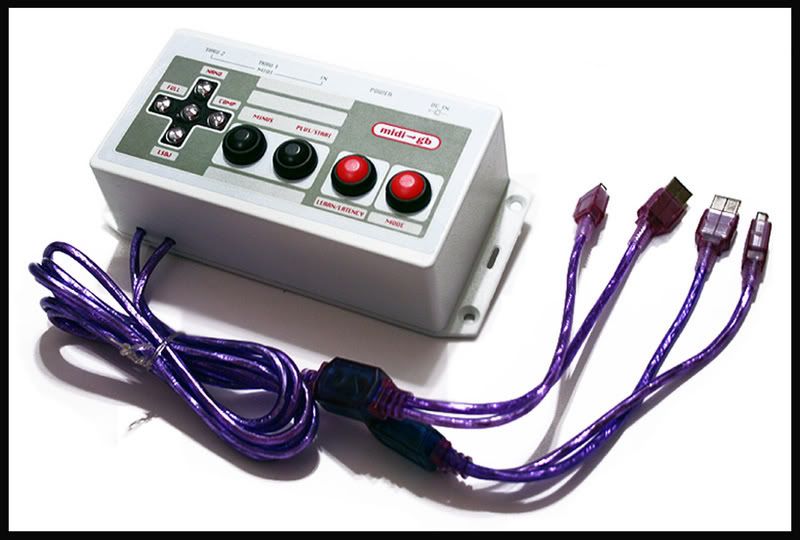
A lowgain midi>gb sync. 8bc member, and chip artist lowgain(Logan Erickson) produced a small run of these in 2008, based off the original design by FirestARTer(http://www.firestarter-music.de/lsdj/)
This device functions much like the arduinoboy, including 4 of the 5 modes(MGB support is missing). It is also contained within a much sturdier case than my arduinoboy, and much less prone to freezing on mode 2, and becoming unresponsive as my arduinoboy occasionally did(for reasons i was unable to identify).
Furthermore it contains 2 midi thru ports allowing further support of other devices.
I also received a new clear DMG, bringing my count up to 4 DMGs and 2 GBCs.
With my upcoming performance at the National Campus Band Comp, multiple consoles will come in useful for segueing between songs.
I also received a new clear DMG, bringing my count up to 4 DMGs and 2 GBCs.
With my upcoming performance at the National Campus Band Comp, multiple consoles will come in useful for segueing between songs.
More than 6 months later, I assumed it had been lost in the post, or that I had encountered a particularly shifty individual. This led me to investigate the arduinoboy, which I built in the end.
But this morning, I received a surprise in the mail.

A lowgain midi>gb sync. 8bc member, and chip artist lowgain(Logan Erickson) produced a small run of these in 2008, based off the original design by FirestARTer(http://www.firestarter-music.de/lsdj/)
This device functions much like the arduinoboy, including 4 of the 5 modes(MGB support is missing). It is also contained within a much sturdier case than my arduinoboy, and much less prone to freezing on mode 2, and becoming unresponsive as my arduinoboy occasionally did(for reasons i was unable to identify).
Furthermore it contains 2 midi thru ports allowing further support of other devices.
I also received a new clear DMG, bringing my count up to 4 DMGs and 2 GBCs.
With my upcoming performance at the National Campus Band Comp, multiple consoles will come in useful for segueing between songs.
I also received a new clear DMG, bringing my count up to 4 DMGs and 2 GBCs.
With my upcoming performance at the National Campus Band Comp, multiple consoles will come in useful for segueing between songs.
Subscribe to:
Posts (Atom)